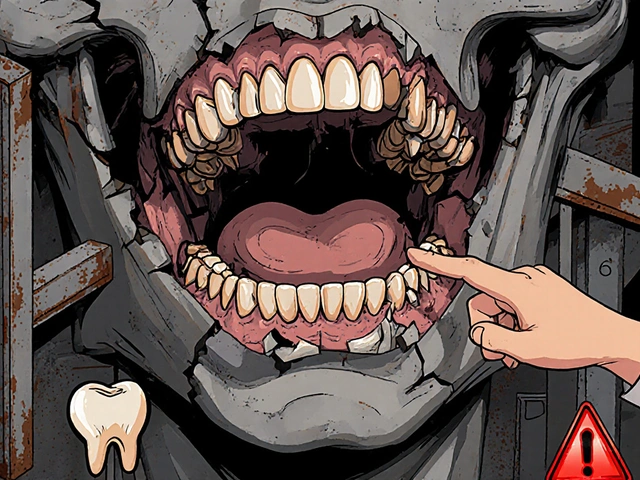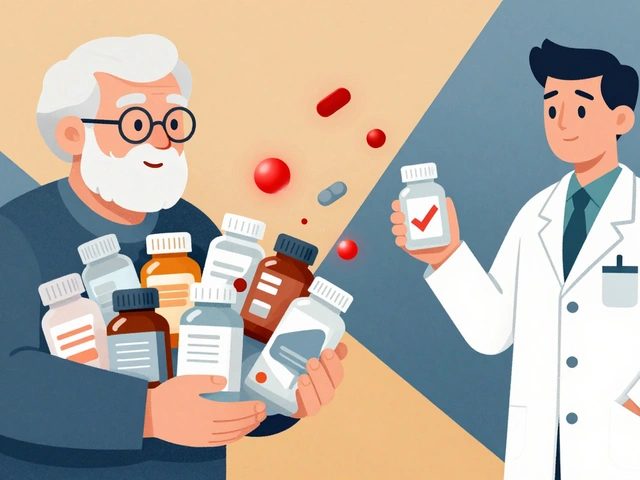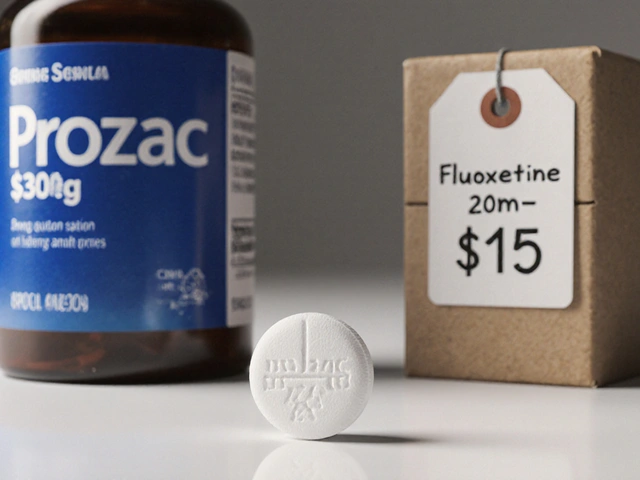You typed it because you want the same pill for a lot less, without getting scammed: buy generic coumadin online. Here’s the bottom line: warfarin (the generic for Coumadin) is one of the cheapest prescription drugs in the U.S. when you use the right channel. You don’t need sketchy sites or overseas packages. With a valid prescription, you can often pay under $10 a month-sometimes under $5-through licensed U.S. pharmacies that ship to your door. I’ll show you how to do it safely, how to compare prices that actually matter, and how to avoid traps that can mess with your INR and your wallet.
How to buy generic warfarin online safely (and actually save)
Before we talk prices, protect the basics. Warfarin is a narrow-therapeutic-index drug. The dose that keeps you safe from clots can be close to the dose that causes bleeding. That’s why safety and monitoring come first, deals second.
Here’s the clean, safe way to buy warfarin online in the U.S. in 2025 without overpaying or risking fake product.
- Step 1 - Confirm the prescription details. You need an active prescription that lists: warfarin (not just Coumadin), your dose (for example, 5 mg once daily or a weekly plan), and quantity (30 or 90 tablets). If you’re switching from brand to generic or changing manufacturers, plan an INR check within a week or as your prescriber advises.
- Step 2 - Pick the right channel for your situation.
- Have insurance? Check your plan’s mail-order pharmacy for a 90‑day fill. Many plans charge a low flat copay (often $0-$10 for 90 days) and ship free.
- No insurance or high copay? Use a reputable price-comparison tool and buy cash from a licensed online pharmacy that ships to your state, or order online for local pickup. Warfarin is so cheap that cash often beats insurance.
- Need it now? Order online for same-day in-store pickup at a chain pharmacy, then switch to mail-order once stable.
- Step 3 - Price check the right way. Compare total cost for the same strength and supply (30 vs 90 days). Look at per‑tablet price and add shipping or membership fees. Warfarin is light and doesn’t need cold-chain shipping, so delivery should be low-cost or free and 2-5 days.
- Step 4 - Verify the pharmacy. In the U.S., it’s illegal to sell prescription drugs online without a valid prescription. Choose pharmacies that:
- Require a U.S. prescription and contact your prescriber if needed.
- Show a physical U.S. address and a licensed pharmacist available for questions.
- Hold accreditation (for example, NABP Digital Pharmacy) or are verified by programs like LegitScript. The FDA’s BeSafeRx resources explain what to look for and how to check state licenses.
- Are licensed in your state. If you live in Washington like I do in Seattle, you can verify a pharmacy’s license through the Washington State Department of Health portal.
- Step 5 - Place the order smartly. Ask your prescriber for a 90‑day supply with refills if your dose is stable; it’s usually cheaper and reduces refill hassle. Confirm “generic substitution permitted.” Choose automatic refills only after your dose has been steady for a bit and you know the delivery timing.
- Step 6 - Keep monitoring on track. Warfarin needs INR checks. If you switch dose, manufacturer, or pharmacy, schedule a follow‑up INR. Consistency is your friend here.
Quick heuristics that save time and money:
- Cash often beats copays. Warfarin is a classic “$4-$10 list” drug. If your copay is higher than that, ask to pay cash.
- 90‑day fills reduce per‑tablet price. Only do this when your weekly dose has been stable.
- Stick to one manufacturer when possible. Tablet color is a guide, not a guarantee. Confirm the NDC on each refill and keep notes; ask your pharmacist if the manufacturer changes.
- Don’t mix strengths to self‑titrate. If your plan calls for different strengths on different days, get a printed dosing calendar from your pharmacist or prescriber to avoid mistakes.
- Time your refills. Order 7-10 days before you run out. Even with quick shipping, weather and carrier delays happen.
What not to do:
- Don’t buy from websites that say “no prescription needed.” That’s a major red flag per the FDA.
- Don’t import prescription meds for personal use. U.S. law generally prohibits it and you can’t verify quality or storage.
- Don’t change dose or stop warfarin just because the pharmacy is late. Call your prescriber for guidance; they may arrange an emergency fill at a local store.

Real prices in 2025, what drives them, and where to get the best deal
Warfarin has been generic for years, and multiple manufacturers compete on price. In 2025, typical U.S. cash prices (with common discount cards) for 5 mg tablets run in the single digits for a 30‑day supply. Insurance copays vary by plan, but many Part D and commercial plans treat warfarin as a Tier 1 generic with low copays, especially via mail order.
| Channel (U.S.) | 30‑day cash price (5 mg) | 90‑day cash price (5 mg) | Shipping/fees | Prescription required | Verification to look for | Notes |
|---|---|---|---|---|---|---|
| Local retail with coupon/discount card | $3-$9 | $8-$20 | $0 pickup | Yes | State license, pharmacist on site | Often the fastest and cheapest; order online, pick up today |
| Big‑box “$4 generic” programs | $4-$6 | $10-$15 | $0 pickup | Yes | Program listing and state license | Some stores still honor legacy $4 lists for warfarin |
| Insurer mail‑order (90‑day) | n/a | $0-$10 copay (plan‑dependent) | Often free | Yes | Plan’s preferred mail pharmacy | Reliable, low copays; requires active insurance |
| Accredited online pharmacy (cash) | $6-$15 | $12-$30 | $0-$5 | Yes | NABP Digital Pharmacy, LegitScript | 2-5 day delivery; solid option if uninsured |
| International site (import to U.S.) | $15-$60 | $30-$120 | Varies | Often no | None | Illegal and risky; avoid |
Price sources and context: These ranges reflect typical U.S. cash prices seen with widely used discount programs and retail quotes mid‑2025 (e.g., GoodRx and direct pharmacy cash lists), plus common insurer mail‑order copays reported across Medicare Part D and commercial formularies. Expect local variation. Always compare your exact strength and quantity.
What affects your price:
- Strength and quantity. Higher strengths aren’t always pricier; per‑tablet cost sometimes drops with 90‑day fills.
- Manufacturer. Different generics can have different cash prices. Ask if the pharmacy can keep you on one manufacturer once you find a stable dose.
- Channel fees. A $5 shipping fee can wipe out a small per‑tablet saving. Do the math on total order cost.
- Insurance rules. Some plans reward mail order with lower copays; others don’t. If your copay beats cash, use the plan. If not, ask the pharmacy to run it as cash.
Simple price math to guide your choice:
- Uninsured and stable dose? Aim for a 90‑day cash fill online or for local pickup. If the 90‑day total is under $20, you’re in the sweet spot.
- Insured with a $0-$10 mail‑order copay? Use the plan’s mail pharmacy for a 90‑day supply.
- Need medication today? Order online for same‑day pickup, then switch to mail-order or 90‑day once stable.
Warfarin vs newer blood thinners (because people ask): direct oral anticoagulants like apixaban or rivaroxaban don’t require INR checks, but they usually cost much more without insurance. If cost is your main constraint, warfarin typically wins on price by a mile. If convenience and fewer interactions matter more and your insurance covers DOACs affordably, talk to your prescriber about the trade‑offs. Don’t swap drugs on your own.
Tablet colors and strengths (so you don’t get tripped up): color is a quick check, but never the only check-always read the label and strength.
| Strength (mg) | Common color | Tip |
|---|---|---|
| 1 | Pink | Low strength; often used for fine‑tuning weekly dose |
| 2 | Lavender | Check label; some brands vary slightly |
| 2.5 | Green | Popular for alternating‑day schedules |
| 3 | Tan | Less common; verify manufacturer |
| 4 | Blue | Don’t confuse with 6 mg teal |
| 5 | Peach | Very common maintenance dose |
| 6 | Teal | Double‑check color under good light |
| 7.5 | Yellow | Higher strength; keep separate from 5 mg peach |
| 10 | White | High dose; store away from look‑alike tablets |
One more thing on brands: “Coumadin” is the old brand; most folks now use generic warfarin. The FDA considers approved generics therapeutically equivalent. Even so, if you switch brands or manufacturers, your prescriber may want a routine INR check-small differences can matter.

Risks, red flags, and smarter alternatives if you hit a snag
The worst way to save money on warfarin is to buy from a site that ships anything to anyone. Counterfeits, wrong strengths, or contaminated tablets can be dangerous, and the risk isn’t worth a few dollars. Here’s how to stay in the clear and what to do if your plan hits a wall.
Hard red flags (avoid the site):
- They say “no prescription needed” or offer to “sell you a prescription.”
- No U.S. address, no pharmacist, no phone or chat with a licensed professional.
- Prices that are bizarrely low or high versus the ranges above.
- Foreign shipping for a prescription med to the U.S.
- Spammy domain names and no way to check state licenses.
Soft red flags (ask questions):
- The manufacturer changes every fill without warning-ask if they can lock one in or note it on your profile.
- Shipping windows longer than five business days-ask for expedited or do local pickup for this month, then move to mail-order next month.
- They can’t tell you the NDC they’ll dispense-request it before shipping so you can confirm consistency.
Risk mitigations you can apply today:
- Get a 30‑day local backup. If it’s your first time on a new online pharmacy, ask for a 30‑day fill locally and move to 90 days once you trust delivery timing.
- Use a pill organizer and a dosing calendar. Warfarin schedules can alternate doses across the week. Keep it written and visible.
- Log interactions. New antibiotics, antifungals, amiodarone, many herbal products (like St. John’s wort), and alcohol changes can alter INR. Flag changes for your clinic.
- Keep vitamin K steady. It’s not about avoiding greens; it’s about consistency. If your diet changes, tell your care team.
Mini‑FAQ (quick answers to the stuff people Google after this):
- Do I need a prescription to buy warfarin online? Yes. U.S. pharmacies must have a valid prescription. That’s non‑negotiable under federal and state law.
- Is generic warfarin as good as Coumadin? Yes. FDA‑approved generics are therapeutically equivalent. Because warfarin is sensitive, your clinic may check INR after any switch.
- What’s a good price? In 2025, $3-$9 for 30 tablets of 5 mg (cash with a common discount) or $0-$10 for 90 days via insurance mail order is normal.
- Can I import from another country to save more? No. Importing prescription meds for personal use is generally illegal and unsafe. Stick to licensed U.S. pharmacies.
- What if shipping is late? Call the pharmacy first. If you’ll run out, ask your prescriber for a short local fill to bridge the gap. Don’t adjust your dose on your own.
- Can I split tablets to save money? Only if your prescriber says so and the tablet is scored. Many warfarin tablets are scored, but dose precision matters; splitting can introduce errors.
- What if my tablet color changed? Check the label and strength. Pharmacies may change manufacturers. If the strength matches, take as directed and let your clinic know at the next INR.
Next steps and troubleshooting by scenario:
- Uninsured in 2025 and need the cheapest legal option: Use a discount card quote for a licensed chain near you for pickup today ($3-$9 for 30 tablets of 5 mg is common). For next month, set up a 90‑day cash mail‑order with an accredited U.S. pharmacy if it lands under $20.
- Insured with a high retail copay: Check your plan’s mail‑order copay for a 90‑day fill. If that’s still high, ask the pharmacist to run the prescription “cash.” Many will honor discount card pricing that beats your copay.
- Out of refills: Order online and choose “contact my prescriber.” Most pharmacies will fax/call your clinic. If you’re inside a week of running out, call the clinic yourself to speed it up.
- Traveling or between addresses: Use order‑online/pick‑up‑in‑store at a national chain in the city you’re in. Once settled, switch to mail order.
- New to warfarin and anxious about dosing: Ask for a printed weekly dosing calendar, use a daily organizer, and schedule your first INR as directed. Keep a note of your manufacturer and NDC.
Why you can trust this approach: it lines up with what the FDA’s BeSafeRx program teaches about safe online pharmacies; with the National Association of Boards of Pharmacy (NABP) Digital Pharmacy accreditation criteria; with typical U.S. retail and mail‑order pricing data reported in 2025 by price aggregators like GoodRx; and with what Medicare’s Plan Finder shows for Tier 1 generics on many Part D plans. If a website or price doesn’t fit this picture, that’s your cue to slow down and verify.
Ethical nudge: warfarin keeps you out of the ER when used right. Treat the purchase like part of your care. Use licensed U.S. pharmacies, keep your INR checks on schedule, and loop in your prescriber if anything changes-dose, diet, drug, or delivery.






Always check the NDC on the label before accepting a refill so you know the manufacturer and can track any changes.
Keep a simple note with the tablet color, NDC, and date you opened the bottle - that tiny habit saved me from a surprise change when a new batch arrived.
Also, when you get a new manufacturer, plan an INR within a week or follow whatever your clinic recommends, and if logistics are wonky get a 30‑day local backup while you test the mail pharmacy.
August 26Willy garcia